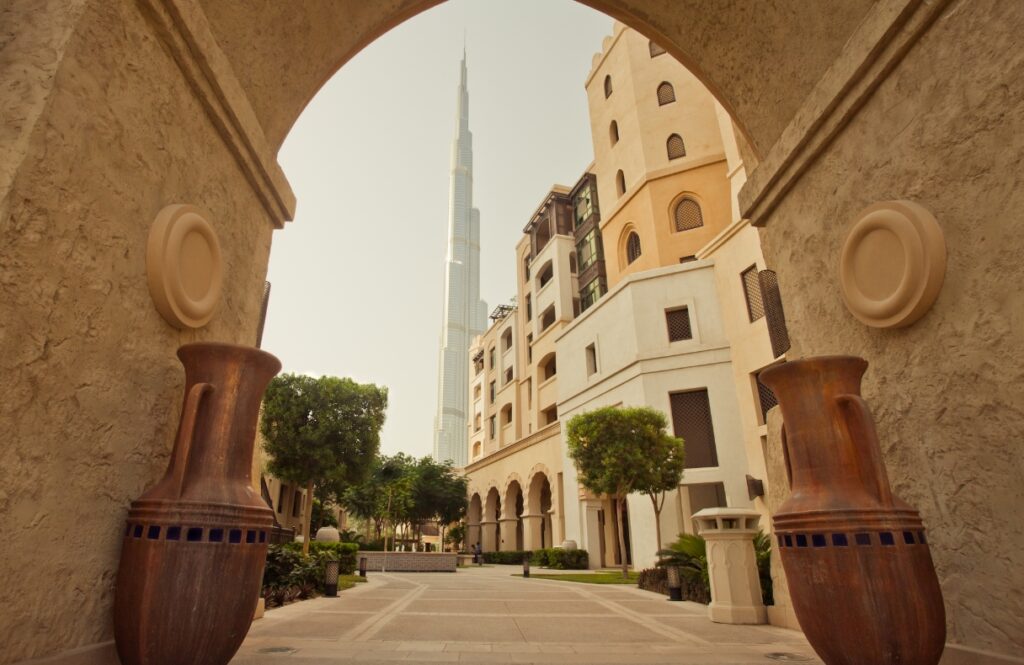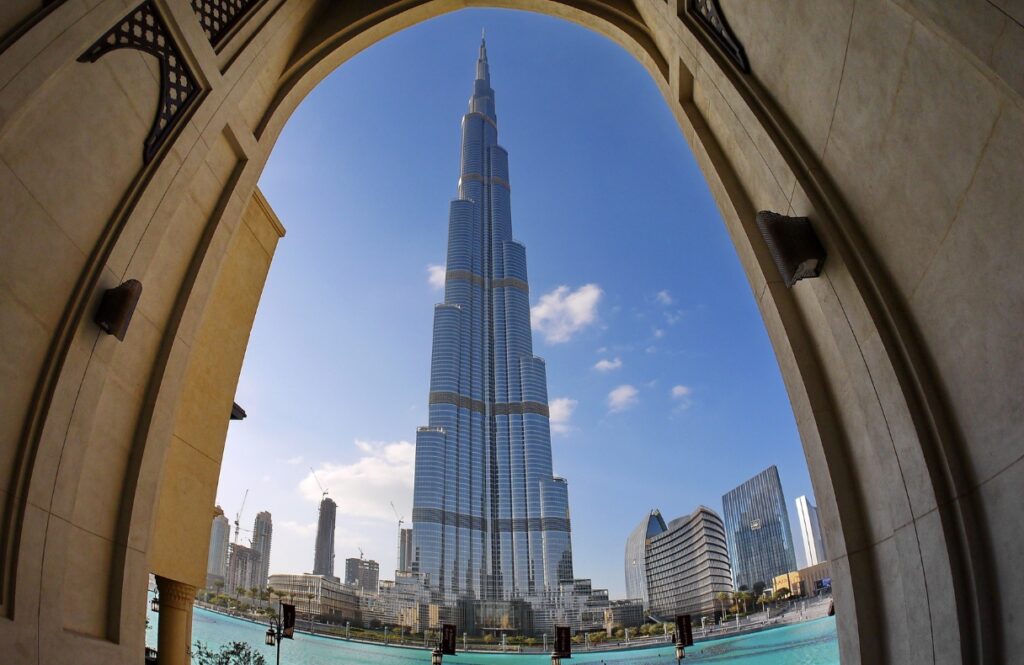Old Dubai – An Enchanting Look at the City’s Past
Dubai stands as a city which people associate with its dazzling skyline of futuristic structures built today. History runs through Dubai underneath its futuristic appearance as people can explore ancient paths through alleyways and visit aromatic spice markets and experience enduring traditions there. The neighborhood cluster of Al Fahidi alongside Deira and Bur Dubai serves as an entrance to observe the former existence of the fishing and pearl-diving settlement that birthed the emirate. A past still alive flourishes throughout this site so visitors can experience how past events created the modern international city. Each nook of Dubai Old City tells the story of continuous survival alongside trade activities and ethnic blending.
The Birthplace of Dubai: Al Fahidi Historical Neighbourhood
People often describe Al Fahidi Historical Neighbourhood (known earlier as Al Bastakiya) in Dubai Old City as the community where the spirit of Dubai exists at its strongest level. Early during the late 1800s Dubai attracted rich Persian merchants who established this compact district of tight alleys containing wind-tower houses due to its tax-free trade environment. The neighborhood architecture showcases brilliant innovation through its coral and gypsum walls and teak doors with brass knockers and traditional barjeel wind towers which served as natural air conditioning before power came to the city. Several restored residential buildings from the past serve as cultural spaces including the Coffee Museum which welcomes visitors to drink traditional Arabic coffee during their knowledge acquisition about Emirati hospitality.
Walking through Al Fahidi produces the feeling of being lost in an antique black-and-white image. The Dubai Museum operates inside Al Fahidi Fort from 1787 and presents an exhibition narrating the evolution of the emirate from a desert base into a trading center. Pre-oil Dubai becomes easily understandable through artifacts that include pearl-diving weights together with ancient weaponry and representations of Bedouin daily life. Reserve some time to visit Sheikh Mohammed Centre for Cultural Understanding to experience local tours and discuss Emirati traditions including fashion standards and nuptial customs in a traditional majlis setting.

The Lifeblood of Trade: Dubai Creek
Visitors need to explore Dubai Old City with a stop at Dubai Creek because this saltwater inlet is what made Dubai thrive as a leading trading center. Wooden dhows carrying the trade loads of spices textiles and pearls originally departed from this very water route in order to connect Dubai to India East Africa and various other places. The Creek continues to be a busy location today but technological goods now replace antique products such as frankincense and smartphones have become the new trading commodities. What describes the ultimate mode of connection to this site? You can experience Dubai Creek with a single dirham riding an abra which is a classic wooden ferry boat. Dubai’s old and modern landscape intersects before boat visitors as the architecture composition displays the city’s ability to unite different time periods.
Visitors on the Bur Dubai side of Creek should explore the enchanting Textile Souk that displays a fluster of colorful textiles ranging from reflective silk to embroidered traditional clothing. Vendors in these shops have operated for many years, showing their stock of multihued fabrics which extend out from their walls. The 45-meter-high minaret of the Grand Mosque serves as Dubai’s tallest structure during the 1970s before various other structures surpassed it. Non-Muslim guests can observe external details of tilework and calligraphy at the site but the city’s prayer broadcasts will reach their ears as they stroll past.
Deep within Deira across the Creek lies the Gold Souk which showcases more than 300 jewelry retailers displaying goods valued at millions. A substantial number of 24-karat necklaces and diamond-encrusted tiaras shine together in window panels throughout Dubai as evidence of its everlasting fascination with luxury. Part of this area includes the Spice Souk where strewed sacks showcase saffron along with turmeric and dried rose petals for sale. Merchants in this market delight in sharing information about Omani frankincense origins along with Iranian pistachio medicinal benefits.
Cultural Crossroads: The Legacy of Multiculturalism
Since its inception Dubai Old City has functioned as a gathering point of different cultures. The immigration of traders from Iran India and East Africa to the Creek area started before Marina and Downtown received substantial expat populations. The area retains its multicultural origins which this DNA initially established. People in Meena Bazaar can purchase Bollywood DVDs from Indian shopkeepers who stand beside them selling gold bangles and Pakistani tailors who prepare kanduras in short timeframes. Visitors enter this Hindu temple located in the area which counts among the few places where Muslims cannot worship to find the scent of jasmine and hear the spiritual bells ringing.
Food stands as the most powerful factor that enables diverse groups to unite as one. Since 1978 regular customers have lines up at Formica tables to enjoy mutton kebabs and hummus at Al Ustad Special Kabab which is an Iranian restaurant staffed by longtime waiters. Local House Restaurant in Al Fahidi serves traditional Emirati food by preparing machboos (spiced meat and rice) alongside luqaimat (dumplings covered with date syrup). Visitors should not skip tasting gahwa (Arabic coffee) with dates in a traditional majlis space while experiencing the Bedouin tradition of generosity through this Arabian ritual.
Preserving the Past in a City of the Future
The calendar of innovation-driven development in Dubai supports the vital heritage duty carried out by Dubai Old City. Approximately historic areas receive restoration treatments which recover their original charm. The Dubai Heritage Village in Shindagha presents a Bedouin desert village through exhibits alongside falconry demonstrations and camel passenger services and the Etihad Museum near Jumeirah showcases the UAE history with interactive exhibitions. The UNESCO has recognized and preserved the traditional boat-building site known as dhow wharfage on the Creek.
History has not arrested the evolution of Old Dubai. Art galleries at XVA Gallery combine traditional architectural spaces with contemporary artworks and visitors can experience Dubai Heritage Week festivities along the Creek where they can see camel races and try henna art while listening to traditional musicians. Old Dubai creates magic through its perfect ability to cherish traditional history while fully accepting fresh modern elements.

Tips for Exploring Dubai Old City
Experience Dubai Old City during its mild autumn and winter months to have the best visit experience. Visit Dubai Old City during early hours to prevent hot temperatures and wear appropriate modest clothing to respect traditional customs. Take advantage of guided walking tours because they will reveal special sites such as Bait Al Wakeel’s private courtyard along with the Iranian Mosque’s unique blue tile decoration. The Green Line of the Dubai Metro serves both Al Fahidi Station and Deira Station and passengers can also reach the Creek via taxi for an abra ride.
Conclusion: The Soul of Dubai
Dubai Old City represents a combination of historic buildings which manifests as the beating core that maintains the essence of the emirate. A visit to this area reveals the true Dubai spirit made from the combination of market vendors’ calls and the distinctive aroma of cardamom. This place shows how the emirate was created through human determination and resourcefulness. The setting sun illuminates both ancient dhows and modern skyscrapers near the Creek as proof that Old Dubai exists in the present day. This place links present to past while allowing people to remember their origins while envisioning their future destinations. Walk away from main roads to explore the complex streets of Dubai Old City which showcases hidden tales that obviously-elaborate buildings cannot express.

